Title : First application of CUT&Tag in bacteria reveals unconventional G-quadruplex landscape in mycobacterium tuberculosis: A novel defense mechanism against oxidative stress
Abstract:
Mycobacterium tuberculosis (Mtb), the causative agent of tuberculosis, remains a global health threat due to increasing drug resistance and high mortality rates. To combat tuberculosis effectively, novel therapeutic targets are urgently needed. G-quadruplexes (G4s) represent promising candidates for this purpose. G4s are non-canonical nucleic acid structures that form within guanine-rich sequences and are involved in the regulation of key cellular processes in eukaryotes. Conversely, the G4 field in the prokaryotic kingdom is still poorly investigated: G4 formation has never been described in vivo and the physiological role of G4s in bacteria has been only scantily elucidated so far. The Mtb genome is highly enriched in GC content (~70%) and has been bioinformatically predicted to potentially form more than 10,000 G4 motifs, but in vivo evidence of their formation is still missing.
In this study, we successfully applied the cleavage under targets and tagmentation (CUT&Tag) technique for the first time in bacteria, mapping the G4 landscape in Mtb under standard and oxidative stress conditions, the latter mimicking the environment Mtb faces within macrophages. We validated the CUT&Tag protocol using an antibody against the RNA polymerase β-subunit, confirming its association with actively transcribed genes. Employing the anti-G4 antibody BG4, we discovered that Mtb G4s, unlike their eukaryotic counterparts, predominantly localize within gene coding sequences and consist of two-guanine tract motifs. Notably, oxidative stress increased G4 formation, correlating with reduced gene expression.
Our findings provide the first evidence of G4 formation in Mtb cells and suggest their potential role in bacterial survival within macrophages. This study demonstrates the successful application of CUT&Tag in bacteria and unveils an unconventional G4 landscape in Mtb, offering new insights into bacterial stress response mechanisms and potential therapeutic targets.



